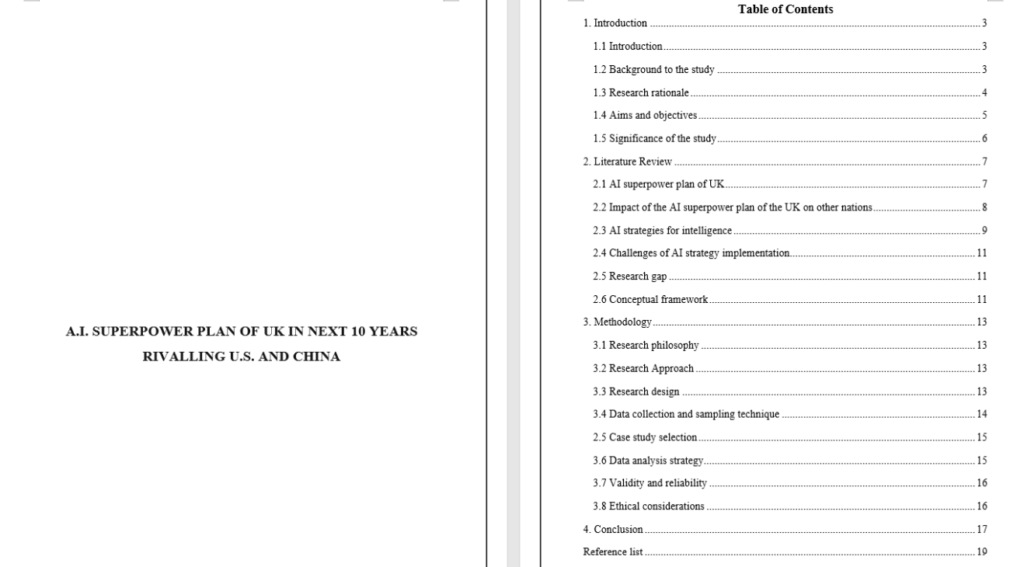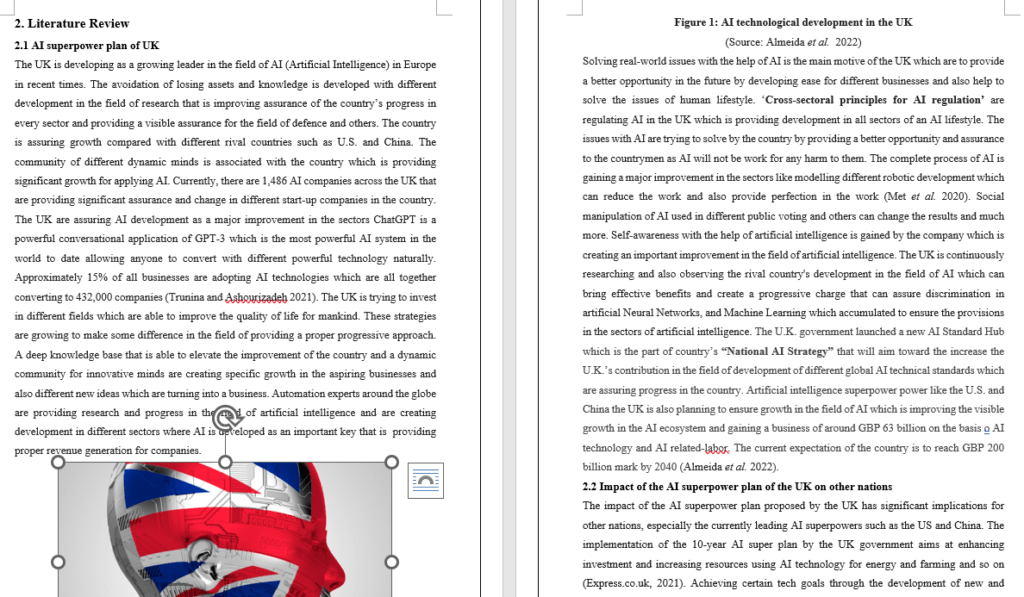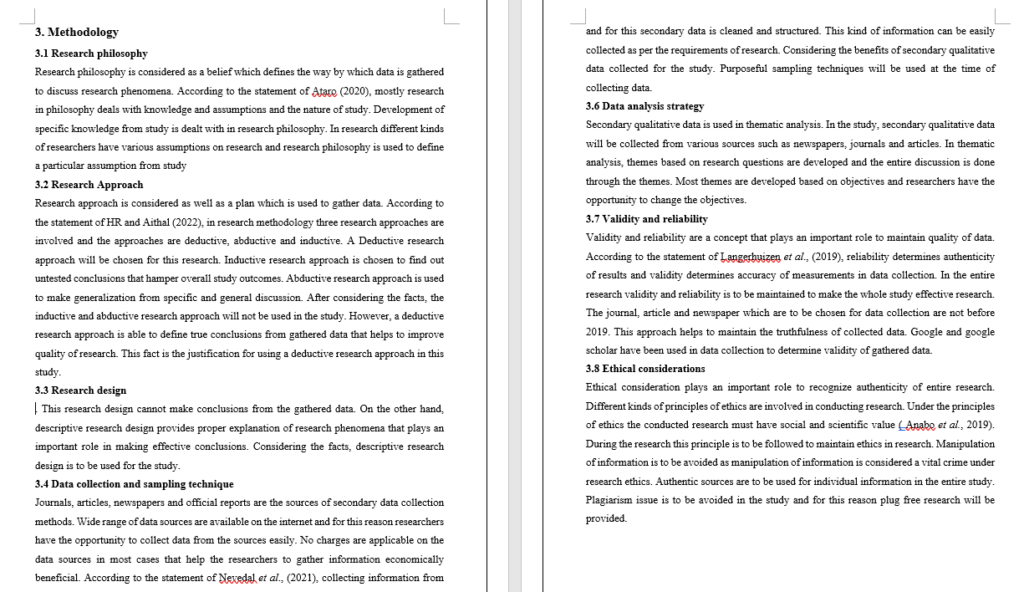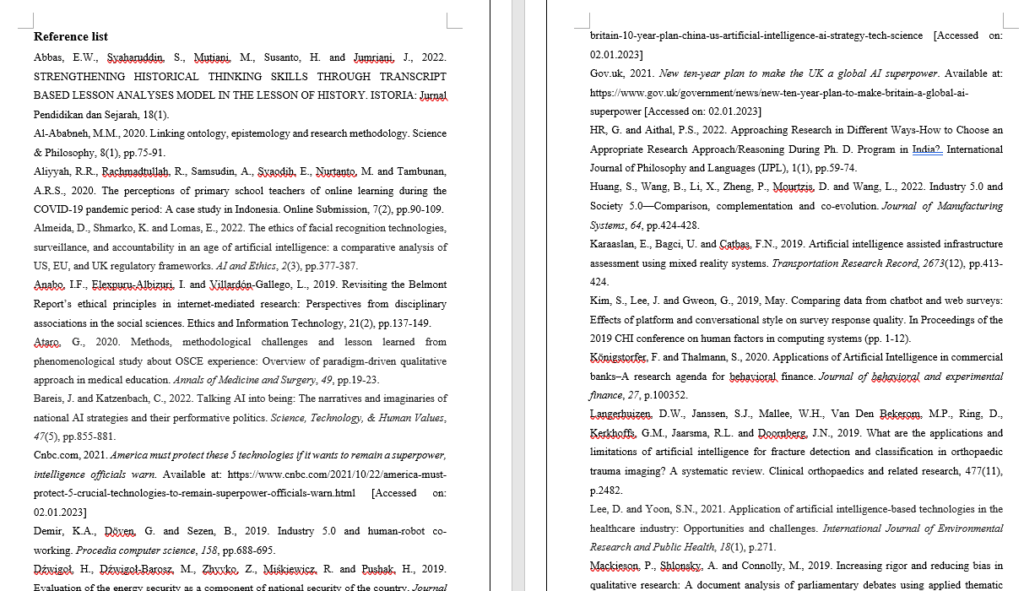The purpose of writing the proposal synopsis is to lay out the groundwork for the author’s research. In certain cases, securing funding for the aforementioned study is a component of this goal. Alternatively, the author may need to get the green light from their department before they can move further with the research. Some graduate programs require applicants to submit proposal for research. Research proposals follow the same format in all of these cases. By outlining their study’s methodology and rationale, researchers in a research proposal give an in-depth evaluation of the study’s applicability to their chosen area.
Making up for a gap in what is already known about their subject in the existing literature. Upholding the findings of earlier research on the subject, and/or adding fresh perspectives to the existing body of knowledge on a certain topic in the academic world.
Writing the proposal synopsis demonstrates that you have the skills to complete the project and have a major impact in your chosen area. This can be achieved if the study proposal highlights not only your academic qualifications and experience but also the scholarly merit of the ideas you present.
However, getting funding for your research project requires more than just proving that your research is solid and that you can carry it out competently.
Furthermore, it is essential that your proposal for research covers all of the following points:
· The procedures and methods you will use to collect, analyze, and explain the data you find
·
· An explanation of how your research fits within the time, money, and space constraints of your school, department, or degree program.
· Reading our piece on literature reviews may have led you to believe that a research proposal is similar. Keep in mind that a literature evaluation is an integral part of, if not the same as, a research proposal. The section in question is about the sources, how they were used, and how relevant they are. An effective literature review will serve as a synopsis of your research proposal while staying true to your core point.
Research proposal format/ Format of synopsis
There is a standard format of synopsis. Almost all research projects include the following sections to achieve the goals mentioned earlier:
Introduction:
Welcome to the guide on crafting a compelling the proposal synopsis. In this comprehensive resource, we’ll walk you through the essential components of a proposal for research, offering insights into each section’s purpose and how to effectively structure your proposal. Whether you’re a novice researcher or a seasoned academic, this guide will help you articulate your research ideas with clarity and precision.
Background Significance:
Research is the cornerstone of progress in any field. Before diving into your proposal synopsis, it’s crucial to establish the significance of your research within the context of existing knowledge. This section serves as the foundation for your proposal, explaining why your research is necessary and how it contributes to the broader academic discourse. By identifying existing problems and gaps in the literature, you can articulate the rationale behind your research and highlight its potential impact.
Objectives:
At the heart of every proposal for research are the objectives – the guiding principles that shape the direction of your study. General objectives outline the overarching goals of your research, while specific objectives delineate the precise questions you seek to answer. It’s essential to strike a balance between ambition and feasibility, ensuring that your objectives are both achievable and meaningful within the scope of your study.
Variables:
Research is inherently concerned with the relationships between variables. By identifying and categorizing independent, dependent, confounding, and background variables, you lay the groundwork for your study’s methodology. Clear definitions and measurements are essential for ensuring the integrity and validity of your research findings, enabling you to draw meaningful conclusions from your data.
Questions and/or Hypotheses:
Whether framed as questions or hypotheses, your research inquiries serve as the driving force behind your investigation. Formulating clear and testable hypotheses allows you to make predictions about the relationship between variables, guiding your research methodology and analysis. For exploratory studies, research questions offer a flexible framework for inquiry, inviting deeper exploration into complex phenomena.
Literature Review:
A thorough literature review is the cornerstone of any proposal synopsis, providing a comprehensive overview of existing scholarship in your field. By critically engaging with landmark studies, books, and scholarly articles, you situate your research within the broader academic discourse. Beyond summarizing existing literature, a literature review should highlight key insights, controversies, and gaps in knowledge, setting the stage for your research contributions.
Research Design, Methods:
In this section, you outline the nuts and bolts of your research methodology, detailing the type of research you will conduct and the data collection methods you will employ. Whether qualitative or quantitative, experimental or descriptive, your research design should align with your objectives and hypotheses.
Future Implications:
As researchers, we strive to generate new knowledge and challenge existing paradigms. In this section, you articulate the theoretical and practical implications of your research, highlighting its potential to refine, revise, or extend existing knowledge in your field. By contextualizing your findings within broader scholarly debates, you demonstrate the value and relevance of your research to practitioners, educators, and policymakers alike.
Plan of Work & Time Schedule:
Effective project management is essential for bringing your proposal synopsis to fruition. By outlining the various stages of your research project and corresponding timelines, you ensure that your work progresses smoothly and efficiently. Whether pursuing full-time or part-time study, clarity and accountability are key to meeting your research goals within the allotted timeframe.
Dissemination of Study Results and Budget:
Once your research is complete, it’s essential to share your findings with the wider academic community. By outlining your plan for disseminating study results, you ensure that your research has a lasting impact beyond the confines of your study. Additionally, providing a detailed budget breakdown and justification demonstrates fiscal responsibility and transparency in research funding.
Conclusion: Crafting the proposal synopsis is a multifaceted endeavour that requires careful planning, critical thinking, and scholarly rigour. By following the guidelines outlined in this resource, you can effectively articulate your research ideas, engage with existing scholarship, and make meaningful contributions to your field. Whether embarking on a new research project or refining an existing proposal, remember that the journey of research is as enriching as its destination.
References/ Bibliography
Along with your literature review, you must include a bibliography. While your literature review elaborated on the relevance and, at times, validity of the sources you used, the bibliography merely lists the sources and the writers of each.
The way citations are written depends on the style guide that is being used. The three most common academic style guides are MLA, APA, and Chicago, and each of these has its own rules and requirements. Keep in mind that every formatting style has specific rules for how to cite different kinds of sources, like pictures, websites, speeches, and videos on YouTube.
On rare occasions, a full bibliography is superfluous; in such cases, you can just include a references list, which is just a compiled list of all the sources you cited in your work; if you are still confused, consult your advisor.
You may use Grammarly’s Citation Generator to cite journal articles in MLA, APA, or Chicago style, and it will guarantee that your essays have perfect citations and no plagiarism.
How to write the proposal synopsis effectively
· Academic writing should be concise, and being formal does not imply employing excessive or ornate vocabulary.
· Research proposals, like other types of academic writing, are prepared with a formal and unbiased tone.
· The document’s word count should be between 2,000 and 3,500 words or around 4 to 7 pages.
· The proposal research should always be written in future or simple present tense
· Stick to the outline that was given to you earlier. The reader is familiar with the typical format and content of a research proposal, so they expect you to follow this outline. Make sure your study proposal is easy to understand and follow. At the end, answer any questions the reader might have.
You should avoid these common mistakes while writing a research proposal
Superficially wordy:
For the record, being formal does not necessitate flowery language. On the contrary, it is recommended that you aim for clarity and brevity in your writing. It is to your advantage to express your purpose and aim more efficiently and straightforwardly.
Ignoring to include relevant references:
When you conduct research, you add to the existing body of knowledge on the subject you’re studying. To make your proposal for research stand out, be sure to cite important articles in your field and explain how your work relates to them. This will demonstrate your expertise in the field and the importance of your work.
Paying too much attention to insignificant details:
Without a doubt, there are many strong reasons why your investigation is necessary. However, not all of these reasons should be included in your study proposal. Including too many questions and topics in your research proposal can weaken the project by obscuring its primary goal. Leave out irrelevant details and concentrate on the important, major issues that you plan to address in your paper.
Not making a strong enough argument for your study:
The proposal synopsis is essentially a type of persuasive writing. Essentially, even though you are presenting your proposal in an unbiased and academic manner, the ultimate objective is to convince the reader to approve your work. This method is probably the easiest way to undermine your plan because it is much more subjective than the other methods.
Bring your proposal to the next level by honing your writing skills. If you are applying for funds to do research, you must be very certain that your idea is sound. Your credibility will take a hit if your study proposal has typos, grammatical mistakes, an inappropriate tone, or strange wording.
Making use of Grammarly to find and fix any language mistakes is a surefire way to make your study proposal shine. Just because you thought you caught every mistake while editing doesn’t mean you have. Grammarly can help you craft the best research proposal possible.
The difference between a Research Proposal and a Synopsis
The purpose and level of detail distinguish between a Research Proposal and a Synopsis for a thesis. A research proposal is an all-inclusive document that lays out the study’s methodology, anticipated results, and research objectives. It’s like a blueprint for the research. In contrast, a Synopsis is a brief overview of the thesis that highlights the main points and provides an overview of the research. It’s like a little introduction to the thesis, showing readers what the study is about without getting into great depth.
To begin with, a research proposal is more detailed than a synopsis; on the other hand, a synopsis is more concise. Regardless, researchers should still write synopses for their publications; otherwise, they risk missing important details that can be added later.
One advantage of writing a synopsis is that it gives the reader a brief overview of your research project without having to go through a mountain of material. Another advantage is that it helps to clarify your study’s topic and its relevance. Finally, a synopsis can help you decide if your issue is worth further investigation by making sure you have enough sources to back up your claims.
To start, a study proposal is different from a synopsis; the former should be targeted and brief, while the latter should contain all of your evidence in an ordered fashion on one page.
If you want your readers to understand what you’re writing about or find more information about a certain issue, you should write a thesis synopsis in the first person and focus on the main points without going into too much detail. A synopsis is also used in book sales to determine if they have enough information to sell your book.
Research proposal example/Research proposal sample






Born with a relentless thirst for knowledge, I ventured into academia, mastering the art of PHD thesis and dissertation writing. Fuelled by curiosity, I embraced digital marketing, deciphering its nuances to become an expert in SEO, content strategies, and social media management. Alongside, I delved into the intricacies of nursing assignments, leveraging my multidisciplinary insights to assist students. Each endeavor shaped my journey, blending scholarly pursuits with practical applications.
